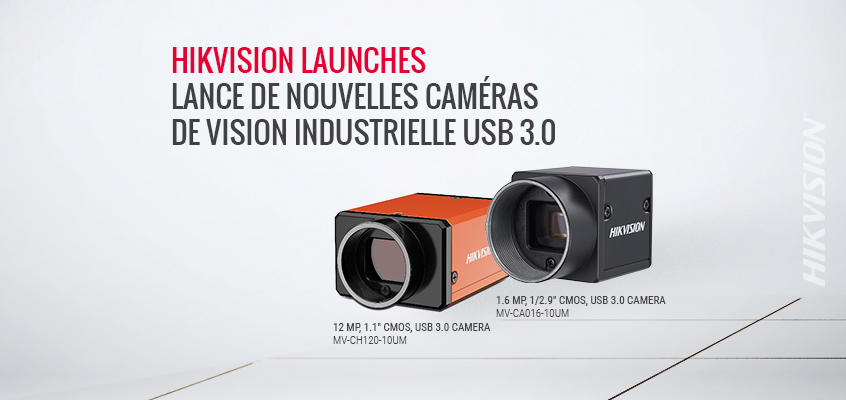Hikvision lance 15 nouvelles caméras de vision industrielle USB 3.0 et 4 versions USB pour des applications spatiales limitées

L'équipe de vision artificielle et de robotique de Hikvision a lancé 15 nouvelles caméras de vision industrielle USB 3.0 pour diverses applications de fabrication, d'emballage et d'automatisation industrielle, ainsi que 4 versions USB pour des applications spatiales limitées.
"Les caméras de vision artificielle USB 3.0 de Hikvision offrent un produit de haute qualité capable d’offrir une excellente qualité d’image et une sensibilité aux pixels dans des applications exigeantes telles que la fabrication de semi-conducteurs électroniques, l’automatisation industrielle, l’inspection de bouteilles et les emballages médicaux", explique Eddie Xiu
Certains modèles d'appareils photo USB 3.0 incluent le capteur Sony Pregius à obturateur global, les IMX 264, IMX 267, IMX304, qui augmentent la sensibilité aux pixels, améliorent la qualité de l'image dans les environnements peu éclairés. De plus, l'obturateur central minimise la distorsion et le flou de mouvement. Parmi les autres capteurs, citons l'IMX183 pour les applications solaires, d'inspection de circuits imprimés et de microscopie ; la haute résolution 20 MP Sony IMX183 ; et pour les applications à faible coût, les SC130GS, Aptina AR0521 et IMX178.
Hikvision MV-CA016-10UM/UC 1.6 MP, MV-CH089-10UM/UC 8.9 MP, et MV-CH120-10UM/UC
Les caméras USB 3.0 12 MP supportent le contrôle de l'exposition automatique et différents modes d'exposition, la correction LUT et gamma définie par l'utilisateur, la synchronisation des déclenchements physiques et logiciels et l'interface USB bloquée pour éviter tout débranchement accidentel. La caméra MV-CE200-10UM / UC 20 MP USB 3.0 comporte également un capteur de volet roulant ; une image idéale avec une performance élevée ; un réglage automatique / manuel du gain, durée d'exposition, balance des blancs, blanc, LUT, correction gamma automatique ; en plus d’augmenter la fréquence d'images en réduisant la résolution et supporte la sortie X inverse; et 128 Mo de mémoire tampon intégrée pour la transmission d'images en mode rafale et la transmission de données.
Les caméras USB au niveau de la carte n’ont pas de boîtier, ce qui offre des performances élevées qui s’adaptent plus facilement et offre plus de flexibilité pour les applications à espace limité.
Pour plus d'informations sur les caméras de vision industrielle de Hikvision, visitez la page de robotique en ligne ici.
